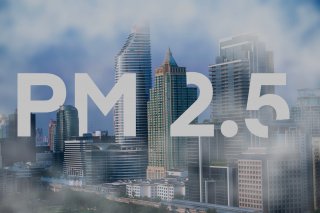Fine particles are a form of particulate matter (pm) that have diameters below 2.5 micrometers in size. They can be solids or liquids and are formed both indoors and outdoors through chemical reactions.
In human interactions, they can be harmful to health or just a nuisance.
What Is The Difference Between Fine & Coarse Particles?
The main difference between fine and coarse particles is size. Coarse particles (sometimes referred to as PM10-2.5) have a diameter generally larger than 2.5 micrometers and smaller than 10 micrometers.
Fine particles (sometimes referred to as PM2.5) are particles that usually have a diameter equal to or smaller than 2.5 micrometers. Also included in fine particles are ultrafine and nanoparticles, which generally have diameters less than 0.1 micrometers.
Are Fine Particles Dangerous?
fine particles pose more of a threat than coarse particles. While coarse particles are still dangerous, they can be visible and are more easily filtered, so they become less of a concern.
On the other hand, fine particles are much smaller and more difficult to filter, so they pose a much greater threat to your health.
In terms of human interactions with particles, ideally, we would not breathe in any particles. But coarse particles are less likely to be breathed in. They can cause irritation in the nose, throat, and eyes, but fine particles do pose a danger because they can irritate the airway.
Short-term, fine particle exposure can lead to coughing, sneezing, and congestion, but exposure can also exacerbate existing respiratory illnesses, such as asthma. Long-term exposure has been linked to a number of illnesses, including premature death in people with heart or lung disease, nonfatal heart attacks, irregular heartbeat, aggravated asthma, and decreased lung function.
So, in short, you’ll want to keep particles out of your lungs.
How Are Fine Particles Formed?
Fine particles are formed from both outdoor and indoor sources. Outdoor, fine particles can be emitted from cars, buses, trucks, and other vehicle exhausts. Anything that results in smoke (such as burning wood, oil, or coal) will produce fine particles. Even common activities such as smoking, cooking, burning candles, and using fireplaces or space heaters will produce them.
Fine particles are also formed from chemical reactions, such as those between gases or droplets in the atmosphere. For instance, the chemical reactions caused by gases put off from power plants. Sometimes, these reactions occur several miles from the original source. When measured in New York, fine particles turned out to be from activities several states away. But they were blown in on the wind.
In a cleanroom setting, this is a reminder that what happens outside the cleanroom can impact the inside. We always have to be cautious of the filtration systems we have in place – as well as the activities conducted inside the cleanroom. If you are doing activities that could cause chemical reactions, be aware that these actions could produce fine particles.
How Can You Reduce Fine Particles In Your Cleanroom?
There are a number of ways to reduce fine particles in your cleanroom, but we’ll start with the basics.
- Monitor your gowning protocols.
Your gowning protocols are what prevent you from contaminating your cleanroom and carrying in unnecessary particles. So make sure these are in place, followed well, and regularly trained on. - Know the activities in your cleanroom that could produce harmful fine particles.
- Recognize that particles also come from physical interactions.
Fine particles are not just created by chemical reactions but physical ones as well. If you scratch your arm, you’ll create particles and put them into the air (which is why we gown – human skin, clothing, and hair are massive particle generators). So be conscious of where heavy traffic occurs in your cleanroom and the particles that could be generated. - Maintain your filters.
Depending on your classification of cleanroom, you’ll need to meet different standards of cleanliness and use different filters. Make sure to routinely check your filters to ensure they are still functioning. This is a piece of maintenance often overlooked. For instance, in 2018, a cleanroom in NASA’s Johnson Space Center in Houston, TX, showed that an air filter was contaminated with fungi. This is, of course, concerning because of the spreadability of fungi. So make sure to regularly inspect and replace your filters if necessary.
But what do you do when particles inevitably make their way into your cleanroom? Because no matter the effort we put in to prevent them from entering, they will get in one way or another.
One thing you can do is make sure you have a proper air particle counter in place. A good particle counter will be able to size and count particles and alert you immediately. Spot checking frequently is not enough in today’s cleanroom.
You need the reliable peace of mind that comes with real-time monitoring and alerting systems.
To know more, please check Lighthouse.

